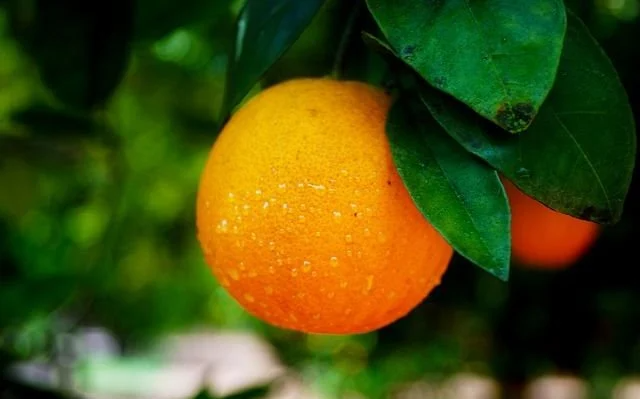
SA citrus exports predicted to grow despite challenges
The 2024 citrus export season is set to commence this month, marking the beginning of an anticipated period of heightened activity. Leading up to this crucial phase, the variety focus groups of the Citrus Growers’ Association of Southern Africa (CGA) disclosed their projected export volumes for the forthcoming season during the Citrus Marketing Forum convened last week.
“Overall, an increase in export volume is expected. This is a testament to the resilience of South African citrus growers, producing more citrus under challenging circumstances, such as steep increases in input costs, load shedding and deteriorating public infrastructure. This increase is also a result of younger trees coming into production across several regions,” says Justin Chadwick, CEO of the Citrus Growers’ Association of Southern Africa.
The estimates for the 2024 season:
The current prediction is that 37.9 million (15kg) cartons of lemons will be exported to key markets, which is an increase of 7% over last year. This continues the upward curve of Lemon exports, which has more than doubled since 2016.
Figures for oranges are also expected to be up. Predictions show a 4% increase in export volume for Navel oranges, with 25.6 million (15kg) cartons expected to be packed. After two years of suppressed Valencia orange exports, production is likely to improve in 2024 and return to the long-term trajectory.
An increase in 2023 export volumes of 12% to 58 million (15kg) cartons is projected. However, the Orange Focus Group highlighted that due to substantially higher returns expected for fruit being supplied to local processors, exports could be reduced by up to 5%. This has not been factored into the forecast of 58 million cartons.
Grapefruit exports are also predicted to increase back up to the long-term average. The 14% growth figure translates into 16.7 million (15kg) cartons. The increased export volume can partly be ascribed to processing fruit (PP class) once again being exported to China, which was not the case last year.
The Satsuma season is likely to close around the 1.7 million mark (up 16%), while Clementines and Novas are expected to reach 5.4 million (up 8%) and 4.5 million (up 8%), respectively. It is too early to tell what the late mandarin crop will be at this stage and a full estimate will be available later in the season.
“The quality of the fruit for 2024 looks to be excellent and timing for harvesting is expected to be typical. Recent dry conditions in the Northern growing regions could mean that fruit sizes might be somewhat smaller than in 2023, but late rains could change this. Meetings with a variety of focus groups are held regularly to track estimates and any final data on fruit sizes will be communicated when available,” says Chadwick.
In the 2023 export season southern African citrus growers packed 165.1 million (15kg) cartons for delivery to global markets. While this was an increase of approximately 800,000 cartons from the packed figures of the previous year, it was substantially below the long-term anticipated growth curve.
“The industry can, if all role-players work together, potentially reach the target of 200 million cartons in the next four years, and possibly 260 million cartons by 2032. It is important to note that while volumes are increasing, this does not automatically mean an increase in the profitability or viability of many citrus farms, given the steep increases in input costs across the value chain,” continues Chadwick.
While the increase in predicted export volumes for the 2024 season places the industry on a stronger trajectory to achieve these goals, severe challenges remain.
The European Union’s discriminatory and unscientific phytosanitary regulations regarding Citrus Black Spot (CBS) and False Coddling Moth (FCM) is a serious threat as it could lead to South Africa being denied access to the European market – a market which accounts for more than one-third of South African citrus exports.
“Given the high stakes involved, the CGA hopes the South African government will soon call for the establishment of an independent World Trade Organisation (WTO) panel that can adjudicate on the FCM matter. On CBS the government must call for a WTO consultation process,” adds Chadwick.
Inefficient logistics also remain a major concern. “Congestion at the ports has been holding back growth in the citrus sector and the SA economy at large. Transnet, in collaboration with industry stakeholders, has been addressing port efficiency in the past months and will continue unabated to do so, but the fear remains that equipment breakdowns and related disruptions might influence exports this season.
“The CGA views the expeditious introduction of the appointed private operator of Durban’s Pier 2 container terminal, International Container Terminal Services Inc. (ICTSI), as critical. Any delays in the expansion of private sector involvement in port logistics will in effect imperil the export economy.
“The CGA remains cautiously hopeful about the coming season. Recent successes for the industry ahead of exports kicking off include the entry of global liner shipping company, Hapag-Lloyd, into the SA shipping market, as well as the expansion of the shipping options offered by global company MSC. A new bilateral protocol between South Africa and Vietnam has also been established, opening the Vietnamese market to South African oranges. This market is sized at 15,000 tons.
“The CGA remains committed to working with all role-players including the SA government to ensure the continued inclusive growth of the sector and, in turn, the creation of more jobs and revenue for the country,” concludes Chadwick.
Source: Bizcommunity.com
